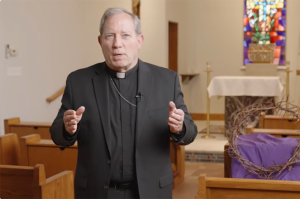The Changing Face of Higher Education

You can hardly mention higher education today without hearing buzzwords such as innovation, change, reinvention, or transformation. There are more conferences on innovation in higher education than we can keep track of, much less attend, and more reports about innovation in teaching, research, business models, and technology than we can possibly read, much less implement!
Most people resist change; most organizations resist change; in fact, they say, "change is only welcome from a vending machine." The hardworking and deeply committed administrators and faculty of our colleges and universities are not unique in seeking ways to make progress while preserving the status quo. The status quo however is rapidly disintegrating.
Tuitions rise while the unemployment rate is at record highs for recent college graduates. Imagine over $1 trillion in student debt and then our graduates enter the worst job market in years!
As you well know, we live in an age of information super abundance. Every day 300 billion e-mails, 200 million tweets, and 2.5 billion text messages go through our digital networks. Last year alone the world's information base was estimated to have doubled every 11 hours. 1.5 billion people in the world have personal computers with 6.5 billion mobile users!
Computers enable new forms of communicating. They present information as incredibly understandable in previously unimaginable ways. Like any commodity, information needs a context. Otherwise, it is unintelligible gibberish.
Perhaps no other development has had more effect on the modes of learning for today's college student than the digital revolution. Whereas traditional classroom settings with chalkboards and face-to-face interaction between professors and students were the norm for centuries, today's college classrooms are expected to be technologically advanced with state-of-the-art equipment. In addition, the greater demand for online learning has forced many colleges and universities to make and consider dramatic changes in their degree programs and in how they deliver student services.
The digital revolution raises critical ideological questions about how and where we provide our educational programs and how we prepare our students to be 21st Century learners. It also impacts how we equip our campuses, classrooms, labs, and libraries; how we support and provide services to our students, faculty, staff, and alumni; and ultimately how we compete in a highly competitive environment.
Clearly the landscape in higher education is changing. Now more than ever, it is necessary for institutions to assess the risks, challenges, and opportunities that are before us and develop a unique strategic direction that is congruent to our missions, yet also sets us apart from our competition.
In my experience, changes in technology define how we deliver our education. These define us as educators and they define our students—even down to how they think and how they process learning.
Our students have grown up with the Internet: laptops, cell phones, tablets, and Kindles. I grew up with candles. They are more comfortable reading a textbook online than they are reading a hard copy of a textbook. They have different views on communication and on what they want to communicate about, to, and from!
Education is not just the transmission of information and ideas, rather it is the training needed to make use of information and ideas. As information breaks loose from bookstores and libraries and floods into computers and mobile devices, that training becomes more important, not less.
The administrators with whom I serve consider our faculty to be coaches and personal trainers in intellectual fitness. We provide individualized instruction in how to evaluate and make use of information and ideas, teaching our students how to think for themselves. Education at its core requires one mind engaging with another in real time listening, understanding, correcting, modeling, suggesting, prodding, denying, affirming, and critiquing thoughts.
As President of Lancaster Bible College I am keenly aware that since our founding in 1933, our mission has remained constant: To educate Christian students to think and live a biblical worldview and to proclaim Christ by serving Him in the Church and society. Our focus is on the student's journey to do something remarkable, to make a difference. Our approach is to equip students to think critically and to apply these skills as they process the information and ideas available to them.
Our faculty and staff have embraced our mission and share responsibility in fulfilling it. But the changes, challenges and opportunities presented by a changing world demand a new way of thinking. Not a new mission, but rather a new approach that is better suited to the days ahead.
Andy Stanley, influential author and pastor in Atlanta, says it this way: "We are married to the mission but we date the model." In other words, we are "mission firm but model flexible."
To meet changing needs with an effective approach at Lancaster Bible College…
- We are ensuring that we provide coherent development of online collaborative experiences within a degree program.
- We are providing an online environment flexible enough to incorporate all the relevant tools to support student collaboration and tutor observation.
- We require that all our staff are kept up-to-date with the technological, pedagogical and andragogical implications of introducing new communication technologies and tools into the teaching and learning process.
- We routinely engage in evaluative trials, small experiments of new technologies and tools prior to wholesale adoption, rather than blindly following the latest trend.
A set of podcasts is the 21st century equivalent of a textbook, not the 21st century equivalent of a teacher. Collaborative learning is the key to unlocking this 21st century dynamic of teaching and learning.
- Collaborative learning, a concept increasingly referred to as "flipping the classroom," allows our students to…
- Build their own knowledge through active personal engagement.
- Develop interpersonal and teamwork skills needed in the workplace.
- Develop an understanding of the multiple perspectives needed for living in a multicultural society.
- Engage in the appropriate professional discourse for their discipline.
- Share their skills and experience to solve more complex problems than they could handle as individuals.
The Teague Learning Commons (TLC), completed in 2012, ushered in a new approach in how LBC supports the teaching and learning dynamic. We have brought together in this 43,000 square foot building all the departments that support teaching and learning and given them a presence in the TLC. Our professors are able to help our students use the World Wide Web to access, process, and apply this super abundance of information to their major.
Because of the super-abundance of information today, which I referenced earlier, we have included an Information Literacy Lab classroom outfitted with 24 computers to help students gain the skills necessary to process the information available to them. Interactive whiteboards are in all the main classrooms in this building.
Information literacy is an expected outcome of the learning experience in institutions of higher education. In our technology lab classrooms, our faculty members stimulate student-centered learning environments that reinforce a biblical worldview and promote a desire for life-long learning.
Inquiry-based teaching environments, using technology, are enhanced by guiding students through the process of obtaining pertinent online information, synthesizing a variety of media tools, and managing data for different levels of research methods. Students who master the art of gathering, analyzing and applying information achieve greater self-esteem, higher levels of critical thinking skills and a wider range of competencies to offer their future employers.
Bill Gates is famous for saying, "Online education is not the NEXT new thing, it is the NOW big thing." Biblical online education at Lancaster Bible College began in August of 2005 with the hiring of a director to develop and implement the program. In February 2006, the online Degree Completion Program was accredited through the Association for Biblical Higher Education followed by accreditation through Middle States Association of College and Schools in 2007. Our first students came from as close as the neighboring county to as far away as the United Kingdom.
Since those early beginnings, online education has continued to grow. Today we offer programs to nearly 2000 students for undergraduate, degree completion, graduate, and PhD programs. These are delivered through 210 fully online courses, 225 blended and 895 supplemental e-Learning courses. In fact, virtually all students and faculty use online education resources in one form or another. Our online education has reached and served students in more than 20 states and more than 15 countries, from Central America to Asia. And, to top it off, over a recent holiday break, the transition was completed to a brand new eCampus platform, offering leading edge online education that can be delivered through computers, tablets and mobile devices.
Nimble educational thinking and planning have made possible online education, multi-campus expansion, additional degree programs, the rescue of struggling institutions, and growing enrollment in a changing student demographic. Numerous and remarkable developments which I would love to share in detail with you have transpired.
Conclusion:
The proper use of technology and collaboration stimulates change by forcing us to reflect on what education is, identify what only a person can do, and then devote our educational time to it. The core task of training minds is labor intensive. It requires the time and effort of bright, highly trained, and motivated individuals.
One thing colleges and universities cannot do is pretend that things will stay the same! Technology is changing education. The way students learn is changing education. This is coming whether we like it or not.
In our daily commitment to impart knowledge to our students, we must also instill in them the core that equips them to use their knowledge well. We have been entrusted with the men and women who are determining the quality of our homes, schools, businesses, communities, and country. This trust is not for the faint of heart and its outcome is crucial for the days ahead.




























